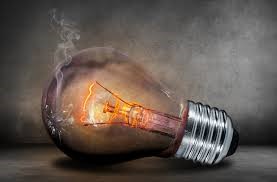Keeping your home comfortable doesn’t have to mean high electric bills. With just a few small changes, you can lower your electricity costs—and still enjoy all the modern conveniences you’re used to. Whether you’re renting or own your home, these electric cost-cutting ideas can make a big difference.
1. Switch to LED Bulbs
LED bulbs use up to 80% less electricity than traditional incandescent bulbs and last much longer. Replacing just a few frequently used bulbs can result in noticeable savings over time.
2. Unplug “Energy Vampires”
Appliances like coffee makers, toasters, chargers, and TVs use electricity even when turned off. Unplug devices when they’re not in use, or use a smart power strip that cuts power automatically.
3. Use Smart Plugs or Timers
Smart plugs allow you to schedule when electronics turn on and off. They’re perfect for controlling lamps, fans, or gaming systems that don’t need to be on 24/7.
4. Set Your Thermostat Wisely
Set your thermostat to 68°F (20°C) in winter and 78°F (25°C) in summer when you’re home. Lower or raise the temperature slightly when you’re away. A programmable or smart thermostat can automate these adjustments for you.
5. Limit Space Heater and Portable AC Use
While convenient, space heaters and portable air conditioners are big energy hogs. Use them only when necessary and avoid running them for long periods. Consider using a fan or layered clothing instead.
6. Wash with Cold Water
Heating water accounts for a large portion of your electric bill. Washing clothes in cold water can cut energy use and still clean your clothes effectively—plus, it’s gentler on fabrics.
7. Air Dry When You Can
Skip the dryer and hang your clothes to dry when possible. If that’s not practical, try using dryer balls to cut down drying time and avoid overloading the machine.
8. Seal Leaks and Drafts
Gaps around windows and doors can let heated or cooled air escape. Use weather stripping or draft stoppers to keep your home sealed and your HVAC system from working harder than it needs to.
9. Close Blinds and Curtains Strategically
In summer, close blinds during the hottest part of the day to keep your home cooler. In winter, let sunlight in during the day to naturally warm your space—just remember to close them at night to keep the heat in.
10. Check the Fridge and Freezer Settings
Your fridge should be set to 37–40°F (3–4°C), and your freezer to 0°F (-18°C). Keeping them too cold wastes energy, and keeping them too warm risks food spoilage. Also, make sure the seals are tight and clean the coils regularly.
Final Tip: Track Your Usage
Most utility companies offer online tools that let you monitor your energy use. Tracking your usage can help you understand where your energy goes—and spot patterns or spikes that might signal a problem.
Remember: Cutting your electric costs doesn’t have to mean living in the dark. With a few smart changes, you can save money while keeping your home safe, comfortable, and energy-efficient.


